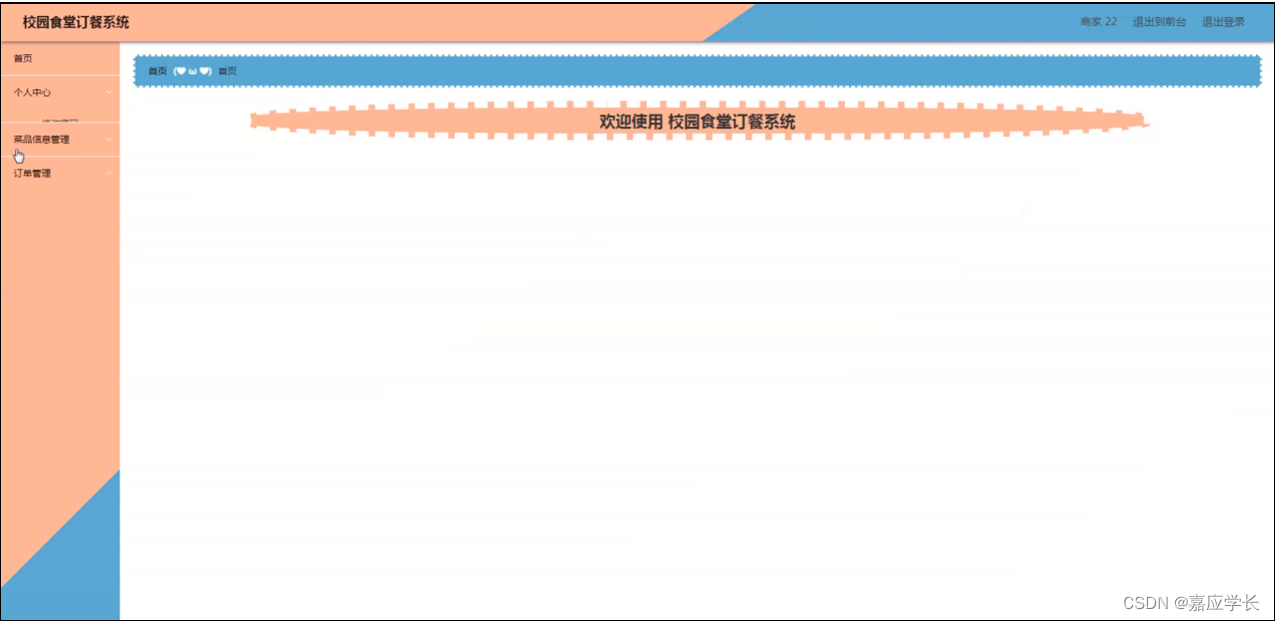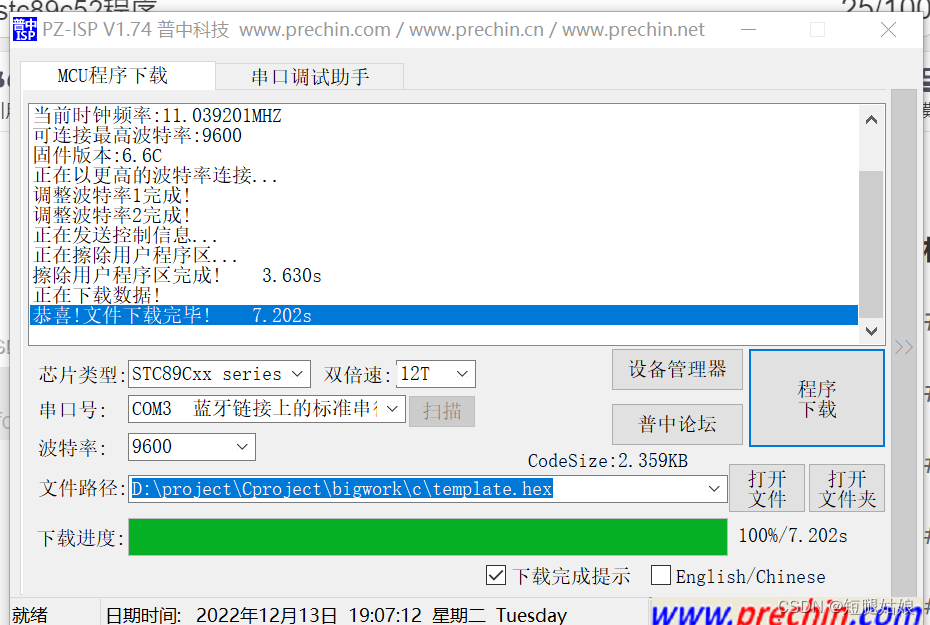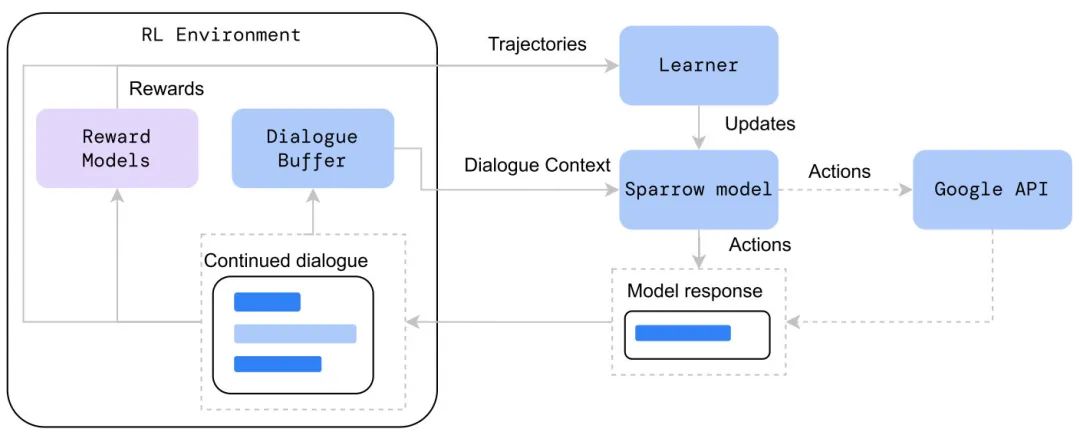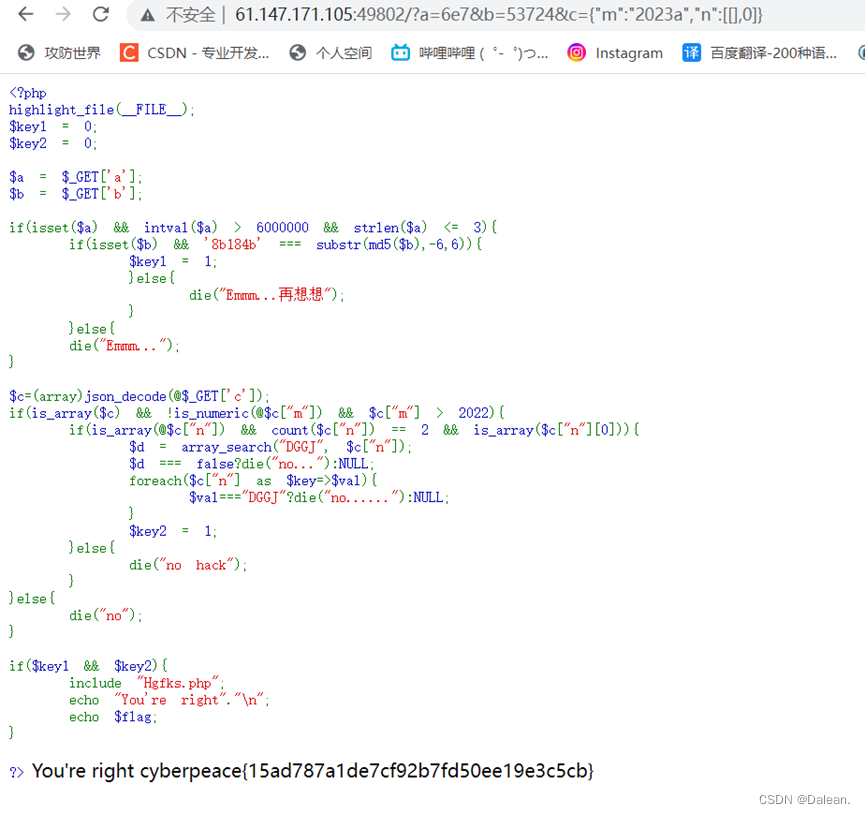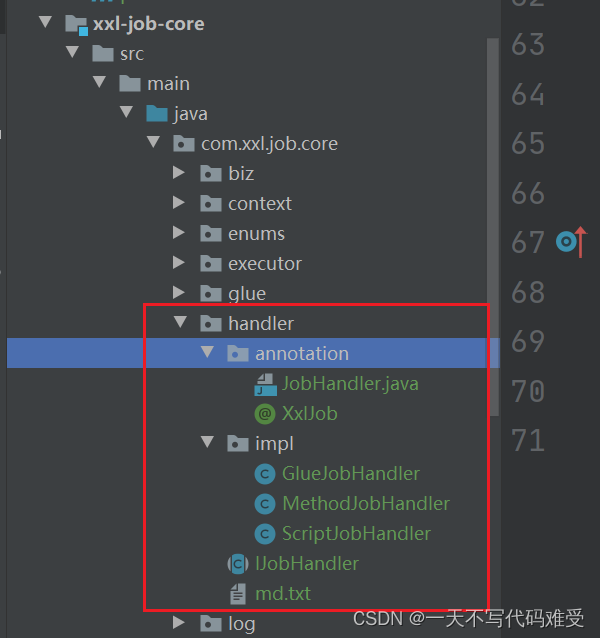个人文档站点:小熊学Java
1、底层结构
相信大家都已经听过很多了,这里就不多阐述了,至于什么时候是数组,什么时候会变成链表,后续会讲解,别急!
| JDK版本 | 数据结构 | ||
|---|---|---|---|
| JDK1.7 | 数组+链表 | ||
| JDK1.8 | 数组 + (链表 | 红黑树) |
2、树化与退化
1、为什么要用红黑树,为何一上来不树化,树化阈值为何是 8?
红黑树用来避免 DoS 攻击,防止链表超长时性能下降,树化应当是偶然情况
hash 表的查找,更新的时间复杂度是 O(1),而红黑树的查找,更新的时间复杂度是 O(log_2n),TreeNode 占用空间也比普通 Node 的大,如非必要,尽量还是使用链表。
hash 值如果足够随机,则在 hash 表内按泊松分布,在负载因子 0.75 的情况下,长度超过 8 的链表出现概率是 0.00000006,选择 8 就是为了让树化几率足够小
2、何时会树化?
链表长度超过树化阈值;
数组容量 >= 64
static final int TREEIFY_THRESHOLD = 8;
/**
* 当桶数组容量小于该值时,优先进行扩容,而不是树化
*/
static final int MIN_TREEIFY_CAPACITY = 64;
static final class TreeNode<K,V> extends LinkedHashMap.Entry<K,V> {
TreeNode<K,V> parent; // red-black tree links
TreeNode<K,V> left;
TreeNode<K,V> right;
TreeNode<K,V> prev; // needed to unlink next upon deletion
boolean red;
TreeNode(int hash, K key, V val, Node<K,V> next) {
super(hash, key, val, next);
}
}
/**
* 将普通节点链表转换成树形节点链表
*/
final void treeifyBin(Node<K,V>[] tab, int hash) {
int n, index; Node<K,V> e;
// 桶数组容量小于 MIN_TREEIFY_CAPACITY,优先进行扩容而不是树化
if (tab == null || (n = tab.length) < MIN_TREEIFY_CAPACITY)
resize();
else if ((e = tab[index = (n - 1) & hash]) != null) {
// hd 为头节点(head),tl 为尾节点(tail)
TreeNode<K,V> hd = null, tl = null;
do {
// 将普通节点替换成树形节点
TreeNode<K,V> p = replacementTreeNode(e, null);
if (tl == null)
hd = p;
else {
p.prev = tl;
tl.next = p;
}
tl = p;
} while ((e = e.next) != null); // 将普通链表转成由树形节点链表
if ((tab[index] = hd) != null)
// 将树形链表转换成红黑树
hd.treeify(tab);
}
}
TreeNode<K,V> replacementTreeNode(Node<K,V> p, Node<K,V> next) {
return new TreeNode<>(p.hash, p.key, p.value, next);
}
3、何时会退化树?
在扩容时如果拆分树时,树元素个数 <= 6 则会退化链表
remove 树节点时,若 root、root.left、root.right、root.left.left 有一个为 null ,也会退化为链表
退化的源码:
final Node<K,V> untreeify(HashMap<K,V> map) {
Node<K,V> hd = null, tl = null;
for (Node<K,V> q = this; q != null; q = q.next) {
Node<K,V> p = map.replacementNode(q, null);
if (tl == null)
hd = p;
else
tl.next = p;
tl = p;
}
return hd;
}
-
在扩容时如果拆分树时,树元素个数 <= 6 则会退化链表
static final int UNTREEIFY_THRESHOLD = 6;
final void split(HashMap<K,V> map, Node<K,V>[] tab, int index, int bit) {
TreeNode<K,V> b = this;
// Relink into lo and hi lists, preserving order
TreeNode<K,V> loHead = null, loTail = null;
TreeNode<K,V> hiHead = null, hiTail = null;
int lc = 0, hc = 0;
// 遍历计算树节点
for (TreeNode<K,V> e = b, next; e != null; e = next) {
next = (TreeNode<K,V>)e.next;
e.next = null;
if ((e.hash & bit) == 0) {
if ((e.prev = loTail) == null)
loHead = e;
else
loTail.next = e;
loTail = e;
++lc;
}
else {
if ((e.prev = hiTail) == null)
hiHead = e;
else
hiTail.next = e;
hiTail = e;
++hc;
}
}
if (loHead != null) {
//小于树节点6,则链化
if (lc <= UNTREEIFY_THRESHOLD)
tab[index] = loHead.untreeify(map);
else {
tab[index] = loHead;
if (hiHead != null) // (else is already treeified)
loHead.treeify(tab);
}
}
if (hiHead != null) {
//小于树节点6,则链化
if (hc <= UNTREEIFY_THRESHOLD)
tab[index + bit] = hiHead.untreeify(map);
else {
tab[index + bit] = hiHead;
if (loHead != null)
hiHead.treeify(tab);
}
}
}
-
移除节点时
final void removeTreeNode(HashMap<K,V> map, Node<K,V>[] tab,
boolean movable) {
int n;
if (tab == null || (n = tab.length) == 0)
return;
int index = (n - 1) & hash;
TreeNode<K,V> first = (TreeNode<K,V>)tab[index], root = first, rl;
TreeNode<K,V> succ = (TreeNode<K,V>)next, pred = prev;
if (pred == null)
tab[index] = first = succ;
else
pred.next = succ;
if (succ != null)
succ.prev = pred;
if (first == null)
return;
if (root.parent != null)
root = root.root();
// 若 root、root.left、root.right、root.left.left 有一个为 null ,也会退化为链表
if (root == null
|| (movable
&& (root.right == null
|| (rl = root.left) == null
|| rl.left == null))) {
tab[index] = first.untreeify(map); // too small
return;
}
......
}
3、索引是如何计算的
1、索引计算方法
先看源码
static final int hash(Object key) {
int h;
return (key == null) ? 0 : (h = key.hashCode()) ^ (h >>> 16);
//h >>> 16 表示取出h的高16位,具体计算这里就不讲解了
}
-
首先,如果对象我null,则返回0,否则计算对象的 hashCode()
-
再进行调用 HashMap 的 hash() 方法进行二次哈希
-
二次 hash() 是为了综合高位数据,让哈希分布更为均匀
-
-
最后 & (capacity – 1) 得到索引,这里源码并没有看到
关于这里(h = key.hashCode()) ^ (h >>> 16)不懂的可以参考这篇讲解:https://blog.csdn.net/qq_42034205/article/details/90384772
2、数组容量为何是 2 的 n 次幂
计算索引时效率更高:如果是 2 的 n 次幂可以使用位与运算代替取模
扩容时重新计算索引效率更高:hash & == 0 的元素留在原来位置 ,否则新位置 = 旧位置 + oldCap
注意
-
二次 hash 是为了配合 容量是 2 的 n 次幂 这一设计前提,如果 hash 表的容量不是 2 的 n 次幂,则不必二次 hash
-
容量是 2 的 n 次幂 这一设计计算索引效率更好,但 hash 的分散性就不好,需要二次 hash 来作为补偿,没有采用这一设计的典型例子是
HashTable
下面代码演示:容量是 2 的 n 次幂的设计来讲,二次 hash 非常重要
public class Utils {
/**
* 交换元素
* @param array
* @param i
* @param j
*/
public static void swap(int[] array, int i, int j) {
int t = array[i];
array[i] = array[j];
array[j] = t;
}
public static void shuffle(int[] array) {
Random rnd = new Random();
int size = array.length;
for (int i = size; i > 1; i--) {
swap(array, i - 1, rnd.nextInt(i));
}
}
/**
* 随机数组 演示 如果 hashCode 足够随机,容量是否是 2 的 n 次幂影响不大
* @param n
* @return
*/
public static int[] randomArray(int n) {
int lastVal = 1;
Random r = new Random();
int[] array = new int[n];
for (int i = 0; i < n; i++) {
int v = lastVal + Math.max(r.nextInt(10), 1);
array[i] = v;
lastVal = v;
}
shuffle(array);
return array;
}
/**
* 如果 hashCode 偶数的多,容量是 2 的 n 次幂会导致分布不均匀
* @param n
* @return
*/
public static int[] evenArray(int n) {
int[] array = new int[n];
for (int i = 0; i < n; i++) {
array[i] = i * 2;
}
return array;
}
/**
* 如果 hashCode 低位一样的多,容量是 2 的 n 次幂会导致分布不均匀
* @param n
* @return
*/
public static int[] lowSameArray(int n) {
int[] array = new int[n];
Random r = new Random();
for (int i = 0; i < n; i++) {
array[i] = r.nextInt() & 0x7FFF0002;
}
return array;
}
public static void main(String[] args) {
System.out.println(Arrays.toString(randomArray(10)));
System.out.println(Arrays.toString(lowSameArray(10)));
System.out.println(Arrays.toString(evenArray(10)));
}
}
//[30, 53, 12, 41, 24, 23, 17, 9, 45, 35]
//[334561280, 277741568, 2014380034, 388300800, 938082306, 2136473600, 1072037890, 1187053570, 320667648, 700907520]
//[0, 2, 4, 6, 8, 10, 12, 14, 16, 18]
4、put 与扩容
先看下面流程
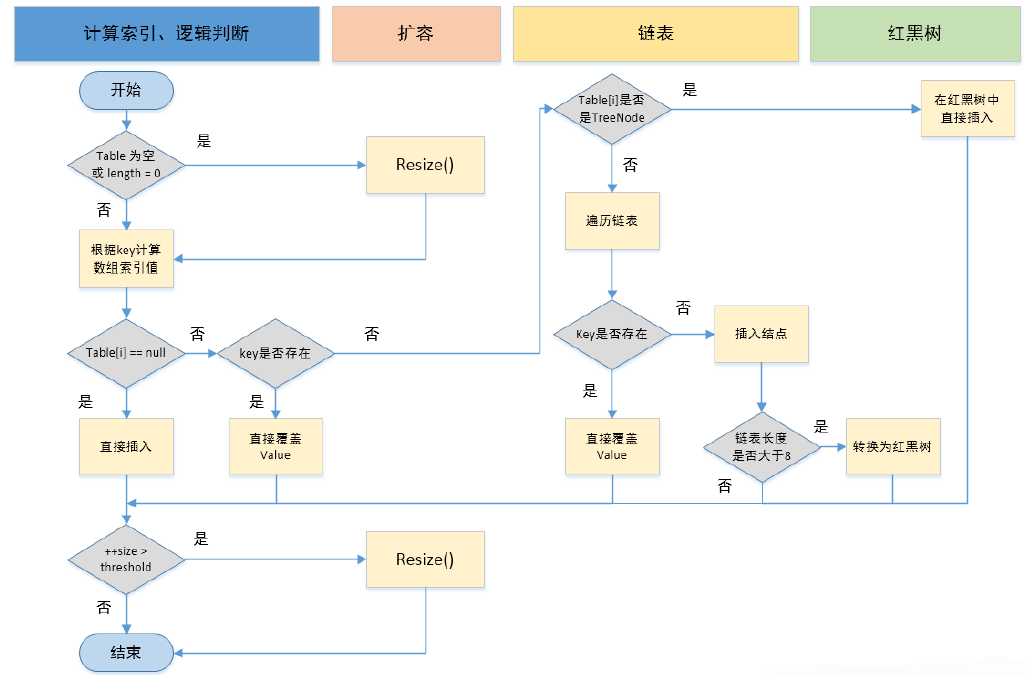
-
HashMap 是懒惰创建数组的,首次使用才创建数组
-
计算索引(桶下标)
-
如果桶下标还没人占用,创建 Node 占位返回
-
如果桶下标已经有人占用
-
已经是 TreeNode 走红黑树的添加或更新逻辑
-
是普通 Node,走链表的添加或更新逻辑,如果链表长度超过树化阈值,走树化逻辑
-
-
返回前检查容量是否超过阈值,一旦超过进行扩容
public V put(K key, V value) {
return putVal(hash(key), key, value, false, true);
}
final V putVal(int hash, K key, V value, boolean onlyIfAbsent,
boolean evict) {
Node<K,V>[] tab; Node<K,V> p; int n, i;
// 初始化桶数组 table,table 被延迟到插入新数据时再进行初始化
if ((tab = table) == null || (n = tab.length) == 0)
n = (tab = resize()).length;
// 如果桶中不包含键值对节点引用,则将新键值对节点的引用存入桶中即可
if ((p = tab[i = (n - 1) & hash]) == null)
tab[i] = newNode(hash, key, value, null);
else {
Node<K,V> e; K k;
// 如果键的值以及节点 hash 等于链表中的第一个键值对节点时,则将 e 指向该键值对
if (p.hash == hash &&
((k = p.key) == key || (key != null && key.equals(k))))
e = p;
// 如果桶中的引用类型为 TreeNode,则调用红黑树的插入方法
else if (p instanceof TreeNode)
e = ((TreeNode<K,V>)p).putTreeVal(this, tab, hash, key, value);
else {
// 对链表进行遍历,并统计链表长度
for (int binCount = 0; ; ++binCount) {
// 链表中不包含要插入的键值对节点时,则将该节点接在链表的最后
if ((e = p.next) == null) {
p.next = newNode(hash, key, value, null);
// 如果链表长度大于或等于树化阈值,则进行树化操作
if (binCount >= TREEIFY_THRESHOLD - 1) // -1 for 1st
treeifyBin(tab, hash);
break;
}
// 条件为 true,表示当前链表包含要插入的键值对,终止遍历
if (e.hash == hash &&
((k = e.key) == key || (key != null && key.equals(k))))
break;
p = e;
}
}
// 判断要插入的键值对是否存在 HashMap 中
if (e != null) { // existing mapping for key
V oldValue = e.value;
// onlyIfAbsent 表示是否仅在 oldValue 为 null 的情况下更新键值对的值
if (!onlyIfAbsent || oldValue == null)
e.value = value;
afterNodeAccess(e);
return oldValue;
}
}
++modCount;
// 键值对数量超过阈值时,则进行扩容
if (++size > threshold)
resize();
afterNodeInsertion(evict);
return null;
}
如何扩容的呢?
| 变量 | 含义 |
|---|---|
| oldCap | 旧桶数组容量 |
| oldThr | 旧阈值 |
| newCap | 新的桶数组容量 |
| newThr | 新的阈值 |
| threshold | 阈值 |
final Node<K,V>[] resize() {
Node<K,V>[] oldTab = table;
int oldCap = (oldTab == null) ? 0 : oldTab.length;
int oldThr = threshold;
int newCap, newThr = 0;
//如果table不为空
if (oldCap > 0) {
//table的长度大于最大容量,则不再记性扩容,返回原table
if (oldCap >= MAXIMUM_CAPACITY) {
threshold = Integer.MAX_VALUE;
return oldTab;
}
// 按旧容量和阈值的2倍 计算新容量和阈值的大小
else if ((newCap = oldCap << 1) < MAXIMUM_CAPACITY &&
oldCap >= DEFAULT_INITIAL_CAPACITY)
newThr = oldThr << 1; // double threshold
}
//threshold > 0,且桶数组未被初始化
else if (oldThr > 0) // initial capacity was placed in threshold
// this.threshold = tableSizeFor(initialCapacity);
//将initialCapacity暂存
newCap = oldThr;
else { // zero initial threshold signifies using defaults
// 调用无参构造方法时,桶数组容量为默认容量, 阈值为默认容量与默认负载因子乘积
newCap = DEFAULT_INITIAL_CAPACITY;
newThr = (int)(DEFAULT_LOAD_FACTOR * DEFAULT_INITIAL_CAPACITY);
}
//如果新阈值为0,按阈值计算公式进行计算
if (newThr == 0) {
float ft = (float)newCap * loadFactor;
newThr = (newCap < MAXIMUM_CAPACITY && ft < (float)MAXIMUM_CAPACITY ?
(int)ft : Integer.MAX_VALUE);
}
threshold = newThr;
@SuppressWarnings({"rawtypes","unchecked"})
// 创建新的桶数组,并初始化容量
Node<K,V>[] newTab = (Node<K,V>[])new Node[newCap];
table = newTab;
if (oldTab != null) {
//如果旧桶数组不为空,则遍历到新桶数组中
for (int j = 0; j < oldCap; ++j) {
Node<K,V> e;
if ((e = oldTab[j]) != null) {
oldTab[j] = null;
if (e.next == null)
newTab[e.hash & (newCap - 1)] = e;
else if (e instanceof TreeNode)
// 重新映射时,需要对红黑树进行拆分
((TreeNode<K,V>)e).split(this, newTab, j, oldCap);
else { // preserve order
Node<K,V> loHead = null, loTail = null;
Node<K,V> hiHead = null, hiTail = null;
Node<K,V> next;
// 遍历链表,并将链表节点按原顺序进行分组
do {
next = e.next;
if ((e.hash & oldCap) == 0) {
if (loTail == null)
loHead = e;
else
loTail.next = e;
loTail = e;
}
else {
if (hiTail == null)
hiHead = e;
else
hiTail.next = e;
hiTail = e;
}
} while ((e = next) != null);
// 将分组后的链表映射到新桶中
if (loTail != null) {
loTail.next = null;
newTab[j] = loHead;
}
if (hiTail != null) {
hiTail.next = null;
newTab[j + oldCap] = hiHead;
}
}
}
}
}
return newTab;
}
-
计算新桶数组的容量 newCap 和新阈值 newThr
-
根据计算出的 newCap 创建新的桶数组,桶数组 table 也是在这里进行初始化的
-
将键值对节点重新映射到新的桶数组里。如果节点是 TreeNode 类型,则需要拆分红黑树。如果是普通节点,则节点按原顺序进行分组。
加载因子为何默认是 0.75f?
在空间占用与查询时间之间取得较好的权衡
大于这个值,空间节省了,但链表就会比较长影响性能
小于这个值,冲突减少了,但扩容就会更频繁,空间占用也更多
5、并发问题
扩容死链(1.7 会存在)
1.7 源码如下:
void transfer(Entry[] newTable, boolean rehash) {
int newCapacity = newTable.length;
for (Entry<K,V> e : table) {
while(null != e) {
Entry<K,V> next = e.next;
if (rehash) {
e.hash = null == e.key ? 0 : hash(e.key);
}
int i = indexFor(e.hash, newCapacity);
e.next = newTable[i];
newTable[i] = e;
e = next;
}
}
}
-
e 和 next 都是局部变量,用来指向当前节点和下一个节点
-
线程1(绿色)的临时变量 e 和 next 刚引用了这俩节点,还未来得及移动节点,发生了线程切换,由线程2(蓝色)完成扩容和迁移

-
线程2 扩容完成,由于头插法,链表顺序颠倒。但线程1 的临时变量 e 和 next 还引用了这俩节点,还要再来一遍迁移

-
第一次循环
-
循环接着线程切换前运行,注意此时 e 指向的是节点 a,next 指向的是节点 b
-
e 头插 a 节点,注意图中画了两份 a 节点,但事实上只有一个(为了不让箭头特别乱画了两份)
-
当循环结束是 e 会指向 next 也就是 b 节点
-
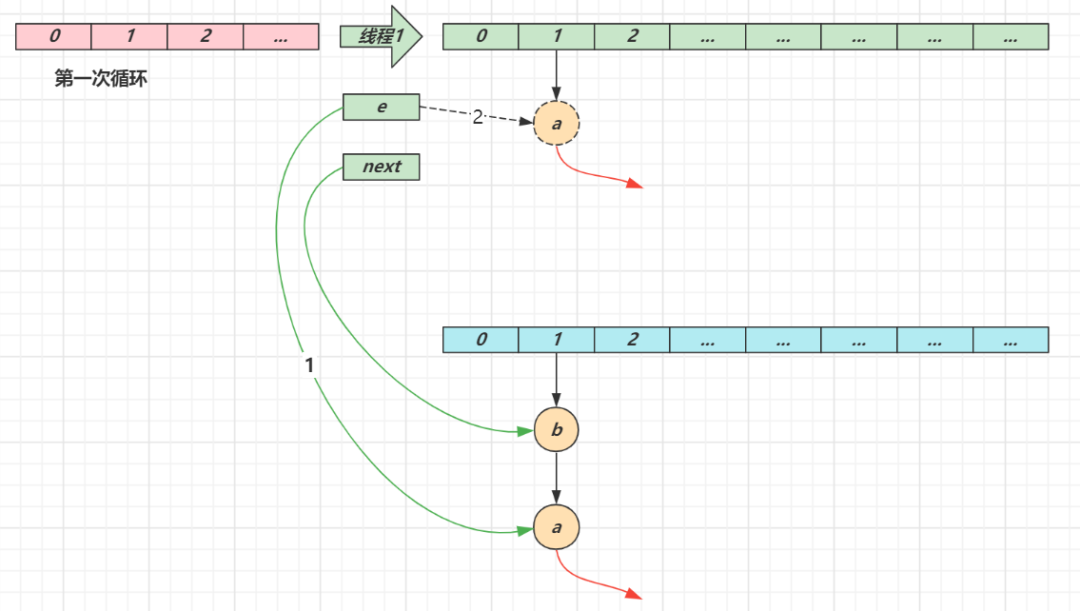
-
第二次循环
-
next 指向了节点 a
-
e 头插节点 b
-
当循环结束时,e 指向 next 也就是节点 a
-

-
第三次循环
-
next 指向了 null
-
e 头插节点 a,a 的 next 指向了 b(之前 a.next 一直是 null),b 的 next 指向 a,死链已成
-
当循环结束时,e 指向 next 也就是 null,因此第四次循环时会正常退出
-

数据错乱(1.7,1.8 都会存在)
public class HashMapMissData {
public static void main(String[] args) throws InterruptedException {
HashMap<String, Object> map = new HashMap<>();
Thread t1 = new Thread(() -> {
map.put("a", new Object()); // 97 => 1
}, "t1");
Thread t2 = new Thread(() -> {
map.put("1", new Object()); // 49 => 1
}, "t2");
t1.start();
t2.start();
t1.join();
t2.join();
System.out.println(map);
}
}
操作:多线程情况下,t1线程在put的时候,此时运行t2的线程,完成put操作,t1 put操作就会丢失数据
6、key 的设计
key 的设计要求
HashMap 的 key 可以为 null,但 Map 的其他实现则不然
作为 key 的对象,必须实现 hashCode 和 equals,并且 key 的内容不能修改(不可变)
key 的 hashCode 应该有良好的散列性
如果 key 可变,例如修改了 age 会导致再次查询时查询不到
public class HashMapMutableKey {
public static void main(String[] args) {
HashMap<Student, Object> map = new HashMap<>();
Student stu = new Student("张三", 18);
map.put(stu, new Object());
System.out.println(map.get(stu));
stu.age = 19;
System.out.println(map.get(stu));
}
static class Student {
String name;
int age;
public Student(String name, int age) {
this.name = name;
this.age = age;
}
public String getName() {
return name;
}
public void setName(String name) {
this.name = name;
}
public int getAge() {
return age;
}
public void setAge(int age) {
this.age = age;
}
@Override
public boolean equals(Object o) {
if (this == o) return true;
if (o == null || getClass() != o.getClass()) return false;
Student student = (Student) o;
return age == student.age && Objects.equals(name, student.name);
}
@Override
public int hashCode() {
return Objects.hash(name, age);
}
}
}
//java.lang.Object@63961c42
//null
String 对象的 hashCode() 设计
-
目标是达到较为均匀的散列效果,每个字符串的 hashCode 足够独特
-
字符串中的每个字符都可以表现为一个数字,称为 Si,其中 i 的范围是 0 ~ n - 1
-
散列公式为:

-
31 代入公式有较好的散列特性,并且 31 * h 可以被优化为

好了,本文就到这里了!如果觉得内容不错的话,希望大家可以帮忙点赞转发一波,这是对我最大的鼓励,感谢🙏🏻
资料获取👇 最后面就是领取暗号,公众号回复即可!
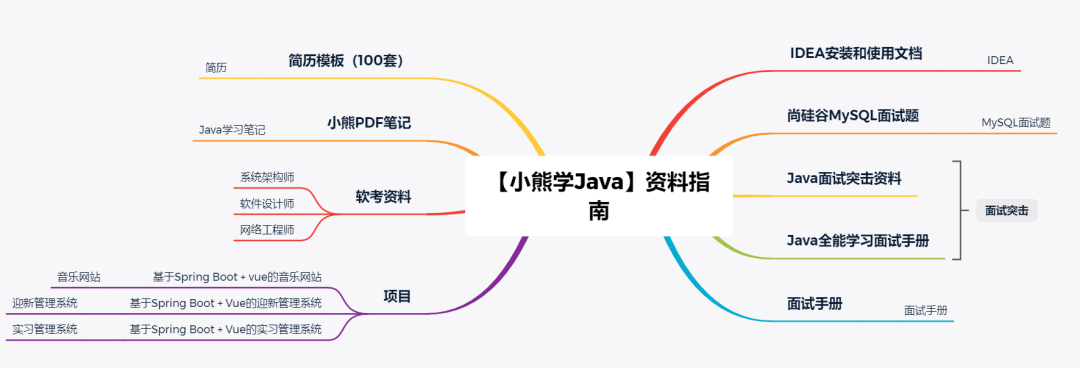

![[附源码]Nodejs计算机毕业设计基于JAVA语言的国货美妆店管理系统Express(程序+LW)](https://img-blog.csdnimg.cn/c055d467eaa1446eb5b153e1421965a6.png)
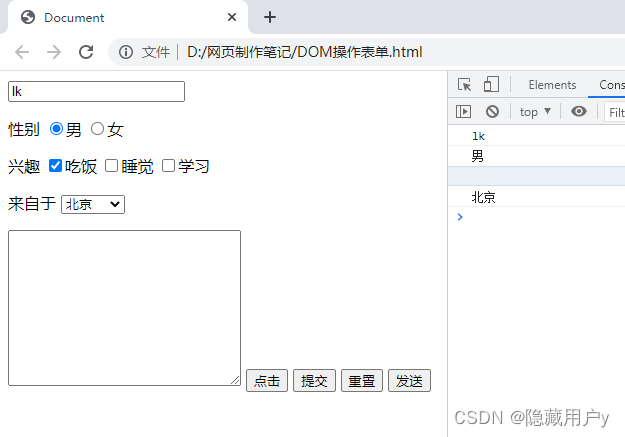

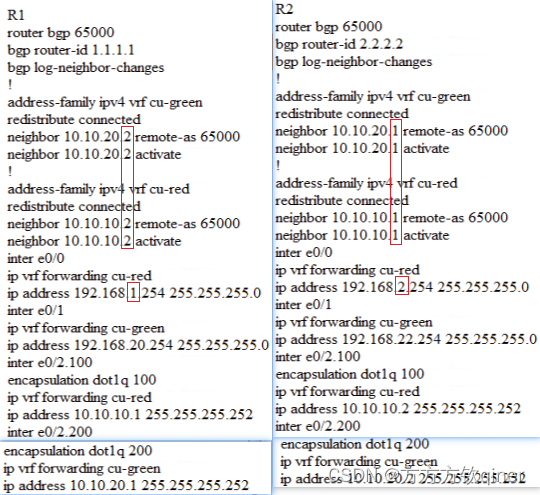


![[附源码]计算机毕业设计的在线作业批改系统Springboot程序](https://img-blog.csdnimg.cn/cb29f2a72d464c4286a6a8afdf35a6d5.png)

